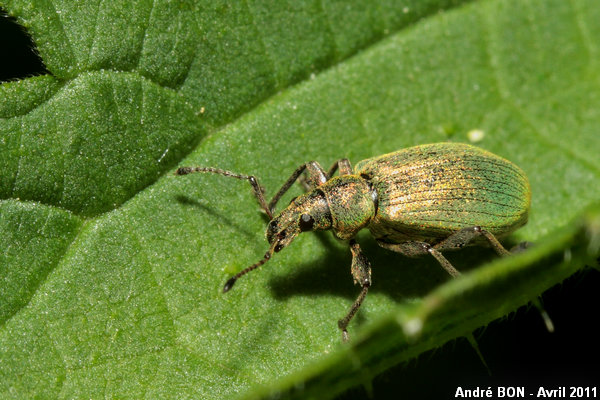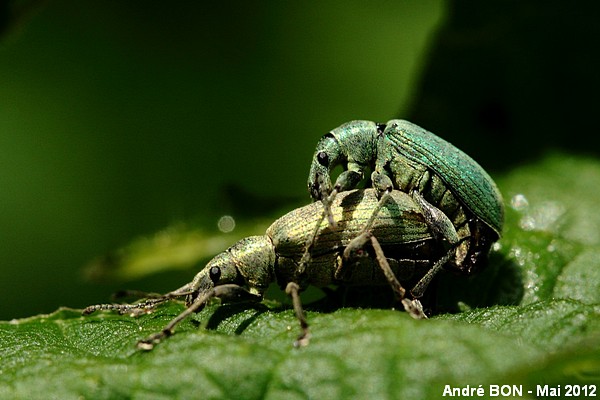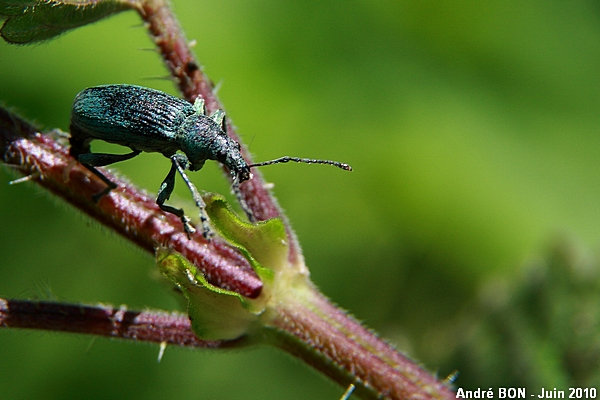


| Green Nettle Weevil (Phyllobius pomaceus (Gyllenhal, 1834)) |



|
|
Scientific name: Phyllobius pomaceus (Gyllenhal, 1834) Common name: Green Nettle Weevil Other names: Other scientific name: Phyllobius urticae. French name: Charançon de l'ortie Order: Coleoptera Family: Curculionidae Wingspan : 7-9 mm. Biotope: You can observe adults on the leaves of different plants. There are often many of them on Nettles (Urticae dioica), this is the origin of the common name. Geographic area: Western and northern Europe, north-western Asia. Observation period : April to September. |
You can distinguish weevils of the Phyllobius genus compared to weevils of the Polydrusus genus from the shape of the scrobe (line where the antenna is inserted). It is rather straight, short and hardly visible on Phyllobius while it is curved and extends as far as below the eyes on Polydrusus. The Green Nettle Weevil shows a typical black ground colour, on the body and on the legs. All is covered by blue-green scales with copper or golden sheen. The scales can fall with age and the weevil becomes more blackish. The femora are rounded and all dented. The second article of the funicle of the antennae is longer and thinner than the first one. Phyllobius pyri has orange tibiae while they are black on Phyllobius pomaceus. |
| [To know more about the Green Nettle Weevil] [Next picture] [Top] |

|
I need to cross a large bed of nettles to go to the river bank in order to observe birds. Impossible not to do a short stop to take a picture of a Green Nettle Weevil. There are many of them here. |
| [To know more about the Green Nettle Weevil] [Next picture] [Previous picture] [Top] |

|
Same river bank as last year, there are also many Weevils on the Nettles. I have made a little stop to shoot a picture of one mating. |
| [To know more about the Green Nettle Weevil] [Previous picture] [Top] |

|
The antennal insertion, visible from above, and the shape of the roster indicate a Phyllobius. The rounded and dented femora, and the black colour under blue-green scales seem to indicate Phyllobius pomaceus, however the second article of the funicle does not appear to be longer than the first one. So we will stay at Phyllobius sp.. I have also observed many on them, very close to this one and on Nettles. I had difficulties to shoot pictures. |